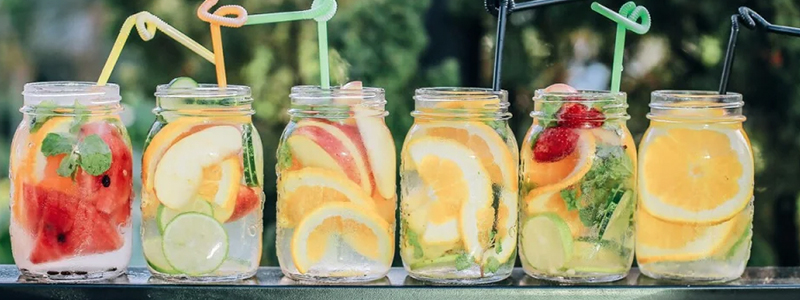A season ripe for the taking
In the US, the summer season runs from the tail end of spring to the beginning of fall, when kids go back to school. In just 60 days, it packs three powerhouse holidays: Memorial Day, July 4th, and Labor Day — as well as countless barbeques, graduations, and celebrations of all kinds. Hotdogs and apple pie are just a starting point for what are arguably the most food-oriented days of the year.

One might ask, why are there watermelons at every turn in the grocery store during the summer?
According to NIQ Connect data, 82% of yearly watermelon sales occur in the 93 days that make up summer. There are several food categories where the summer months can “make or break” their year.
Ready, set, grill
The festivities begin with Memorial Day, the “unofficial” beginning of summer. Unofficial or not, after a five-month span of no national holidays, everyone is excited to kick off the summer season with grilling, camping, baseball games, and parades. Memorial Day is the second-largest grilling holiday behind July 4th and just ahead of Labor Day.¹ On Memorial Day, more than 800 hot dogs are consumed every second. The days of summer are huge for hotdogs and hotdog buns, where more than 50% of their yearly volume is sold.
The days of summer are huge for hotdogs and hotdog buns, where more than 50% of their yearly volume is sold.
2023 could be an inflection point for popular summer foods. Summer foods are inexpensive, which is attractive to consumers considering we are still amid one of the most aggressive inflationary periods in 40 years. Categories with over 50% of volume sold between May and September include hotdogs, hamburger and hotdog buns, and corn.

Did you know?
Did you know that Americans eat enough hotdogs on July 4th to stretch from Washington D.C. to Los Angeles five times? To keep those refrigerated cases stocked, retailers must anticipate the shopping surges around the summer holidays. Forecast accuracy is the difference between running out of stock and meeting shopper demand.
But it’s not just center-of-the-plate foods that see the benefit from summer. On average NIQ sees a 27% increase in sales for ketchup, mayo, and mustard during the summer. Soft drinks see a 20% increase in item velocity, and volume sold on display surges by more than 60%.
Avoid inventory shrink
The summer months are the peak time for inventory shrink in grocery stores. Foot traffic increases, daylight lasts longer, and displays are everywhere. The ratio of guests to store associates increases, and with the current shortage of retail labor, that ratio only gets worse. Pressure from a lack of retail labor has forced the redeployment of associates to the most critical functions: stocking shelves, picking online orders, and getting stock off trucks quickly.
As a result, more self-checkout lanes have been added, and with that comes more shrink — theft — according to the National Retail Federation.

Ride the high tide of small indulgences
According to the US Census Bureau, 62% of the US population will be Millennials by 2025. Experiences are paramount to this generation: they are willing to pay a premium to have a better experience — whether with the brands they buy or the retailers in which they shop.
While paying a premium may sound counterintuitive due to the broader recessionary mindset that pervades most shoppers today, the spice of life is in small indulgences.
Allowing space in planograms for smaller brands that offer high-quality, high value for money, and are incremental to the category, can create the experience Millennial and Gen Z shoppers crave. These little indulgences could come in the form of small-batch artisan pickle chips or local honey. Allowing for the discovery of new items or new-to-the-shopper products builds interest, loyalty, and fun.

Why shopper engagement is heating up
The in-store experience increasingly relies on technology to drive the overall experience. According to Acosta Sales and Marketing, 89% of US shoppers use their smartphones while in the grocery store. Usage can span widely, from wayfinding in the store to specific product locations, reading reviews, managing an electronic shopping list, or searching for coupons and deals.
The level of engagement shoppers has with retailers is at an all-time high because there are so many ways to shop. This also poses some unusual issues because it means there are more experiential opportunities to manage. Shoppers who opt into retail apps and websites are doing so because they view the technology as an enhancement to their shopping experience.
Menus, popup banners, search capability, and connectivity are pieces of that shopper’s experience. Confusion or annoyance with any one or combination of these elements leads to shopper frustration quickly. The user experience is often associated with technology applications, but retailers know that “user experience” is the same thing as “shopper experience.” Loyalty is built by delivering high quality and better than expected experiences to the shopper.

Need to revamp your on-shelf strategy?
Create a holistic approach to streamline your assortment.




